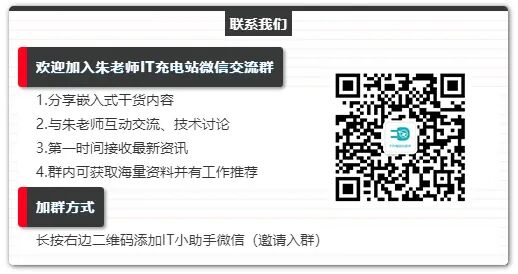The Path of Domestic CPUs You Must Know for Embedded Development
1 IntroductionIn May 2019, the Huawei ban on ARM marked the beginning of a heated discussion about domestic chips in China. Suddenly, people everywhere were talking about the necessity for China to have its own chips, and the internet was buzzing, digging up years of history.The chip industry chain is long, starting from chip design, followed by production, packaging, and then using chips to create various electronic products.The global leader in chip production is Taiwan’s TSMC, while the fully controllable domestic flagbearer is Shanghai’s SMIC, which everyone is already familiar with. Recently, I heard that the 14nm lithography machine ordered by SMIC from ASML has finally arrived, which is truly exciting. We started late in chip production, and in previous years, we did not make a firm decision, so the gap is objectively present, but the speed of catching up is indeed very fast.Chip packaging technology is not highly complex, and there are many domestic companies engaged in it. Using chips to make products is not strictly considered part of the semiconductor industry; it falls under electronic research and manufacturing, which is our greatest advantage. Most electronic products globally are developed, produced, and supplied by us, providing an excellent foundation for the implementation of domestic chips.Therefore, when we discuss domestic chips, we mainly refer to chip design (there are many types of chips, but we will only discuss CPUs here). Historically, there have been many different designs of CPUs, but today, I believe the mainstream and representative ones are 4: X86, ARM, Feiteng, and RISC-V.2 The Kings of the Era: X86 and ARM
First, let’s talk about X86, which has been thriving for many years and is deeply rooted, characterized by high power consumption and high performance. Although the industry has consistently rated X86 poorly, with some even claiming that the worst CPU from a technical perspective is X86, and the worst operating system is Windows, we must admit that both are the most successful in their respective fields.
The main battlefield for X86 is PCs and servers. The personal computers we use, whether desktops or laptops, are all X86-based, and the mainstream servers used by companies are also X86 (although some companies, represented by Huawei, are also making ARM-based servers, their market share is still limited). This is the brilliance of X86, and it is also the foundation for Intel’s dominance among global semiconductor companies.
ARM has been around for a long time, initially surviving in the cracks under the shadow of X86. We discussed this history in the ARM bare-metal section of our embedded Linux core course. ARM’s use of RISC (Reduced Instruction Set Computing) instead of the then-mainstream CISC (Complex Instruction Set Computing) architecture was not due to foresight but rather necessity, indicating that during that era (the PC era), ARM was indeed at the mercy of X86.
However, as we entered the mobile era, PCs evolved from mainframes to IBM minicomputers, then to laptops, netbooks, tablets, and finally to smartphones. Throughout this development process, the size of computers has become increasingly smaller, and the demand for low power consumption has become increasingly high. This is essentially the transition from general-purpose PCs to embedded computer systems, and X86 did not seize the opportunity to adjust in time (although adjustments were made, they were unsuccessful, and the profits from PCs made them reluctant to change), which allowed ARM to capture the vast majority of the CPU market in embedded systems.
Today, Intel has almost completely failed in the embedded field, with a pitiful market share. How ARM defeated Intel is another story, which I will not discuss here.
Both X86 and ARM are designed by foreign companies, with absolute ownership control. If we want to use them, we either have to purchase finished chips from them or buy the licensing rights for chip designs and then produce them ourselves. For example, Huawei’s Kirin series mobile chips are based on the ARMv8 architecture design purchased from ARM, and then additional features are added based on this foundation to form the Kirin chip. Similarly, Qualcomm and Apple also purchase ARM CPU design licenses and then redesign them to create their own mobile chips. ST also purchases licenses from ARM and then redesigns them to form STM32 microcontrollers.
The original ownership of X86 and ARM lies with their respective companies. If they decide one day not to grant you a license, or if they choose not to profit from you and want to choke you off, you will have no recourse. Because the original design ownership is in someone else’s hands, unless you choose to ignore the law and use it illegally, but no major company involved in international cooperation would do that. If you do not comply with intellectual property agreements, who would still do business with you?
3 Domestic Feiteng
To avoid being choked by others, we must create CPU chips with absolute intellectual property rights ourselves. In fact, there have always been efforts in China, but unfortunately, most have ended in failure and scandal. The Hanxin incident is a notorious case of falsified domestic chips, which is lamentable.
Why is it so difficult to create domestic chips? The main reason is that chip design itself is very challenging and requires a lot of funding, which is very costly. The foreign chip design industry has also taken many years and spent a lot of money to grow slowly. Moreover, they have been ahead of us for many years; their X86 and ARM production volumes are very large, leading to lower average costs and thus lower market prices. If we compete based on market economic prices, we cannot compete with X86 and ARM.
Under the rules of market economy, the most suitable method is to purchase others’ chips to make products (which was Lenovo’s choice back in the day, leading to the departure of Academician Ni Guangnan), or at most, purchase others’ chip design licenses for secondary development (which is Huawei’s current choice). This is reasonable; that is how market economies work. You cannot go against the tide; otherwise, you will only face closure.
To break the monopoly and ignite the domestic spark, national support is essential, and Feiteng is an excellent representative. Feiteng’s original design comes from a team at the National University of Defense Technology, a truly national team. The Feiteng CPU has completely independent and controllable intellectual property rights, and it has now formed a relatively complete upstream and downstream ecosystem, with companies specifically designing operating systems (generally based on Linux) and peripheral software for Feiteng CPUs, and companies specifically producing PCs and server computers based on Feiteng CPUs. Of course, the initial customers are mainly government and military procurements, as these scenarios require consideration of national security and place greater emphasis on independence and control. I believe it will gradually enter the market, targeting enterprises and individuals.
Feiteng is a typical example of starting from scratch to create a CPU of our own, representing the most challenging path, but also the safest and most controllable one. Someone must continue down this path.
4 A New Dawn: RISC-V
RISC-V suddenly gained popularity starting in 2019; it is a new CPU architecture. RISC-V originated in the United States, proposed by institutions such as Berkeley University.RISC-V is a significant opportunity for domestic CPU chips to create miracles and overtake competitors.
Many people do not understand; since RISC-V was proposed by Americans, isn’t it still subject to their control? How can it be an opportunity for domestic chips? The truth is:
First, you must understand that the so-called control comes from two main levels: one is legal, and the other is technical.
The legal aspect means I can allow you to use it; I may even make the source code public, but legally, this thing is mine. You can use it because I grant you permission for free. If I stop granting permission, you must immediately stop using it, or you will be violating the law. A typical case is the Android system, which is completely open-source but is uncontrollable because Google can stop granting permission and choke you off.
The technical aspect means I grant you permission to use it but do not open the source code. In this case, even if you want to use it illegally, you cannot do so because the control is entirely in someone else’s hands.
It seems that the legal aspect of control is a bit looser, but in reality, it is the same. Modern human society emphasizes the rule of law; unless there is a war or a complete fallout, you cannot blatantly violate the law to use someone else’s property. Therefore, both types of control are quite painful, which is a typical example of not being “domestically controllable”.
So, aside from creating our own, is there any way to use something created by others that we can use confidently? Yes, the open-source community’s GPL agreement is a typical case; the Linux system was developed abroad (by many engineers from various countries), but it is safe and controllable.Because the GPL agreement legally grants anyone and any organization the right to use the Linux system without being bound by anyone else, and since Linux is open-source, no one can control others on the Linux system, making it impossible from both legal and technical perspectives.
How can RISC-V, proposed by Americans, ensure our “domestic control”? First, from a legal perspective, RISC-V adopts the GPL agreement, which means you do not have to worry about someone suddenly telling you that you cannot use it anymore, and using it would be illegal. Secondly, the official release of RISC-V only includes the RISC-V instruction set standard, and does not provide specific CPU design plans. To use RISC-V, you must design according to the RISC-V instruction set.
What does this mean? It means RISC-V is essentially just a standard; there is no actual CPU design entity. This is completely different from ARM. ARM proposes standards and completes designs; when you ask ARM to pay for a license, you are essentially buying the design IP of ARM chips (which can be understood as buying the usable source code of the chip). You do not need to understand chip design in detail; you can use it with slight modifications based on ARM’s IP. This is the greatest value of ARM; its success lies in enabling many companies without CPU design capabilities to produce CPU chips.
In contrast, RISC-V only provides a standard, akin to providing an interface in software without actually programming the implementation of these interfaces. To use RISC-V, you must write the code to implement all interfaces yourself. Therefore, if you cannot design a CPU, RISC-V is of no use to you (of course, many professional CPU design companies will provide designs that comply with the RISC-V standard, such as domestic ChipRise Technology).
Thus, domestic RISC-V chips are essentially chips designed by domestic companies that comply with the RISC-V standard. The chips are designed by you, so the technology is certainly independently controllable. The RISC-V standard is also legally risk-free under the GPL, making it a truly domestically controllable solution.
5 Why RISC-V is an Opportunity for Chinese Chips
First, consider the value of RISC-V’s design. Many people think that it merely provides a standard, which is essentially just a description of the instruction set that the CPU must implement, and it does not provide anything substantial. It seems like an empty shell. However, the design of RISC-V is very profound and aligns well with the needs of the times.
X86 is the first widely used CPU architecture, selling chips without broad licensing. ARM is the second widely used chip architecture, relying entirely on selling licenses. Have you noticed? It is becoming increasingly open.
Why? If you do not open up, who will use you? If you want to choke others, they are not foolish; who would use you if there is risk? Google was able to establish the Android ecosystem because it promised that Android would be completely open-source and did not compete in the smartphone industry, which is why these smartphone companies would use Google’s Android system. Thus, in this era, if you do not open up, no one will dare to use you. This is the Achilles’ heel of X86 and ARM. As a latecomer, RISC-V must be more open; otherwise, it has no advantage over its predecessors.
The design model of RISC-V was originally intended to allow countries or companies with the capability to design chips to be independent and controllable, free from external control, while also enabling everyone to design CPUs within the same RISC-V standard framework, allowing these CPUs to share the same ecosystem in the future. In fact, the most challenging aspect of creating a CPU is not the technology but the establishment of an ecosystem, which requires the accumulation of many companies, people, money, and time to form competitiveness.
Now you understand why RISC-V is a good opportunity for domestic chips. The first phase of creating domestic chips is certainly to avoid being controlled by others, but that is only the first phase. The second phase is to sell and make profits. However, as the ancient saying goes: do not impose on others what you do not desire.
Today, we worry about others choking us, but tomorrow, when we sell, others will also worry about us choking them. How can business be conducted? How can money be made? Even if you guarantee others, it is useless.
Therefore, it is essential to have completely self-designed and independently controllable chips like Feiteng, primarily for national security and defense. From a market perspective, RISC-V is more suitable for selling domestic chips.
RISC-V was designed from the outset to eliminate any concerns about copyright for any country or individual using it, allowing it to be free from political interference and only consider market factors. Thus, in non-national security-related civilian fields, RISC-V can provide complete freedom of competition under fully market economic conditions. Whoever produces the best and most cost-effective chips will be used; you can directly purchase the most cost-effective RISC-V chips on the market without worrying about being cut off one day. This is truly a brilliant idea.
6 Progress of RISC-V in China
RISC-V is progressing rapidly in China, with many companies continuously investing in this area. Typical representatives include the following.
ChipRise Technology is a company specializing in designing RISC-V chip IP. If chip manufacturers want to produce RISC-V architecture chips but do not want to start from scratch, they can consider collaborating with them to purchase licenses. Thus, ChipRise Technology is somewhat similar to ARM in the RISC-V field.
In 2019, GD (GigaDevice) launched the first RISC-V architecture MCU: the GD32VF103 series, which is performance and configuration comparable to the STM32F103, utilizing the RISC-V core IP designed by ChipRise Technology. This is a great attempt, and we believe that more RISC-V architecture MCUs will emerge this year.
Jack Ma’s Alibaba’s T-head is a strong promoter of the RISC-V architecture. With abundant resources and a talented team, they released the Xuantie 910 series RISC-V processors in July 2019, and more exciting developments are expected.
Huawei HiSilicon seems to have been focused on developing ARM architecture and has not released news about RISC-V chips. But who knows? With Huawei’s “backup” mentality, they might also be secretly working on RISC-V.
7 Conclusion
Whether it is Feiteng or RISC-V, both are futures we must embrace.
In fact, there are other efforts being made, such as Loongson, and companies like Haiguang and Zhaoxin that are working hard to develop domestic X86-compatible series. Due to space limitations, I will not elaborate further.
The technological blockade from the United States is indeed frustrating, but it has also ignited our ambition and determination to work hard to develop domestic chips. This trend has already formed, from national policies to relevant research institutes to leading technology companies, a consensus and trend have emerged, and domestic chips are making significant strides.
This is a great opportunity for us embedded software developers, as so many new CPUs are emerging like mushrooms after rain, which will inevitably require a large number of low-level embedded software developers to provide corresponding development services. It is foreseeable that embedded development positions will certainly see an increase. Especially high-end positions will become more numerous (previously high-end positions were mostly in foreign semiconductor companies, but now they are shifting to domestic ones). Last year, a headhunter contacted me to recommend a position related to chip firmware at Guomin Technology, with an annual salary of around 600,000. A university classmate working in low-level embedded development at Fudan Microelectronics in Shanghai also earns no less than this amount. Such positions are already increasing, and I believe that as the domestic chip industry develops, there will be even more.
Comrades, let’s work hard!

If you have read this, please give a thumbs up to let me know you were here.

PreviousExciting Recommendations
What should a novice do if they are always impatient and cannot calm down?
[In-depth] Can training institutions promise job placement?
If you still don’t know about the industrial internet, you will really be out.
Why is it so hard to recruit IoT operating system architects with an annual salary of one million?
Is ARM based on the von Neumann architecture or the Harvard architecture?
Why do others get high salary offers in embedded development?



 Thumbs upClick here
Thumbs upClick here